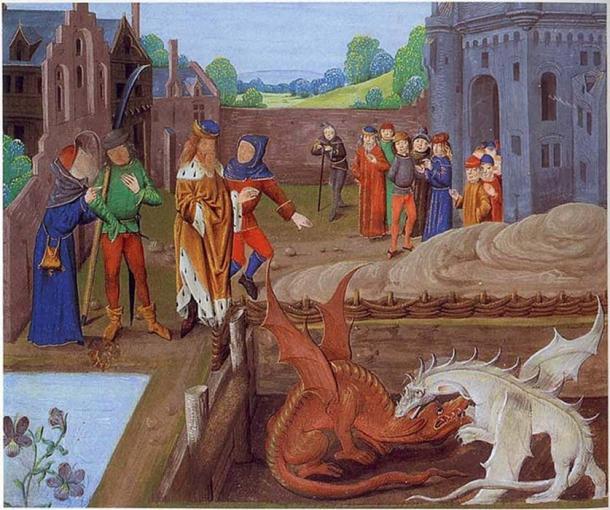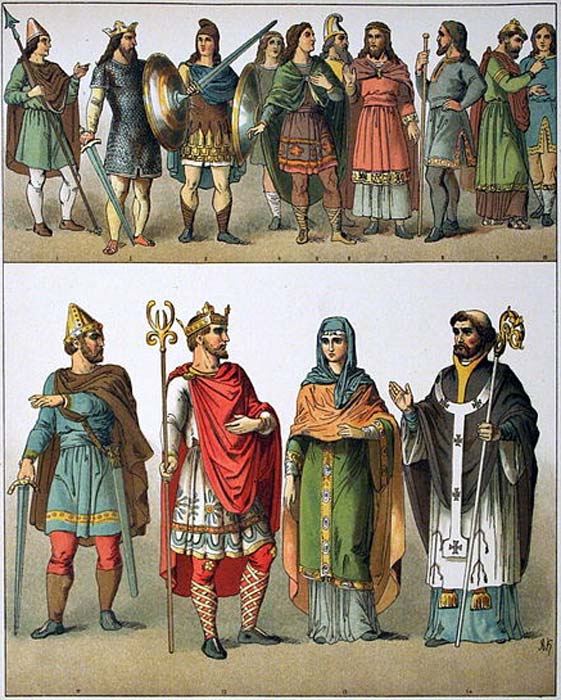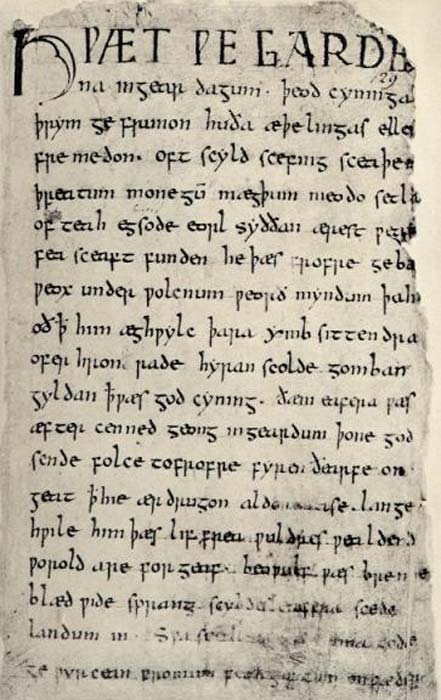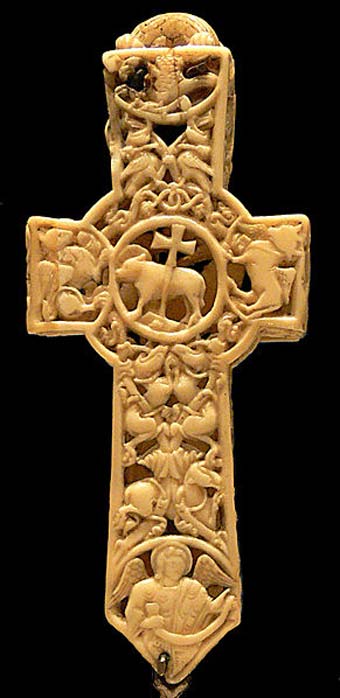
The Anglo-Saxon Conquerors: Creators of Medieval England
The people of England got their name from the Angles, who, along with the Saxons, invaded in the early- to mid-5th century AD, after the Roman Empire began to groan under the weight of barbarian incursions and withdrew from the island. Anglo-Saxon origins are from northern Germany. They ruled England until the 11th century, when the Normans under William the Conqueror arrived.
Other people also came to England after the Romans left, including the Jutes from Denmark and, later, the Vikings. The Jutes were also Germanic people. But it was the Anglo-Saxon culture and Germanic language that shaped England for centuries. They exchanged their Norse religion for Christianity.
The Celts, who had had dominion over Britain before the Romans arrived, withdrew north to Cumbria and Scotland and west to Wales and Cornwall as the invaders set southern Britain to the torch and apparently enslaved the Britons. Others escaped to Brittany.
- The Great Heathen Army: Viking Coalition Becomes an Anglo-Saxon Nightmare
- Ancient stone with strange carvings, possibly Anglo-Saxon, turns up in garden shop
- Fascinating Artifacts Unearthed in TWO Newly Discovered Neighboring Anglo-Saxon Sites in England
The Venerable Bede, a cleric historian of the 8th century, wrote that the British ruler Vortigern invited the Angles, Saxons, and Jutes to help defend his territory against the Picts and Scotti, who were invading from Scotland. At a meeting though, the foreigners pulled knives and stabbed the Britons to death. Then they took over. They spared Vortigern, who became a puppet of the Saxons.

Detail from Lambeth Palace Library MS 6 folio 43v illustrating an episode in Historia Regum Britanniae (c. 1136). Pictured above Vortigern stands at the edge of a pool whence two dragons emerge, one red and one white, which do battle in his presence. (Public Domain)
Who Were the Anglo-Saxon People?
Archaeologists believe the first Germanic migrants from mainland Europe came around 410. The Saxons went on to settle Essex, Wessex, and Sussex. The Angles settled East Anglia, Middle Anglia, Mercia, and Northumbria. And the Jutes settled Kent. The Anglo-Saxons’ later ethnic makeup included other Germanic people, Celts, and later Viking and Danish marauders.

Anglo-Saxon society and clothing, 500-1000 AD. (Public Domain)
The term Anglo-Saxon was used to distinguish Angles and Saxons of Britain from those of the European continent. The term still refers to the period of British history between the end of the Roman occupation and the beginning of the Norman Conquest in 1066.
The Anglo-Saxons were not unified until the 9th century, however, when Egbert, king of Wessex, brought much of England together under one rule. Anglo-Saxon rule of England was interrupted by the Danes under Cnut, who held sway for 26 years beginning in 1016. Not long after, the Normans came to conquer.
Beowulf and the Anglo-Saxon Language
While Anglo-Saxons spoke different Germanic dialects in their many kingdoms, especially earlier on, they developed a rich literary tradition that included Beowulf and the Anglo-Saxon Chronicle, a history of the time. The languages or dialects evolved and became known as old English, which is incomprehensible to a speaker of modern English unfamiliar with the old language.

The first page of the Beowulf manuscript with its opening
Hƿæt ƿē Gārde/na ingēar dagum þēod cyninga / þrym ge frunon...
"Listen! We of the Spear-Danes from days of yore have heard of the glory of the folk-kings..." (Public Domain)
Anglo-Saxon Aristocracy
Anglo-Saxon societal divisions included royalty, the king’s lieutenants or ealdormen, the bishops, and the thanes. The thanes are equated with the more modern word gentry.
A passage from Beowulf illustrates the generosity of Anglo-Saxon kings toward their thanes or men: “Then the protector or earls, the king mighty in battle, bade them bring in the sword of Hrethel, decked with gold … and gave him [Beowulf] seven thousand measures of land, a house and princely rank …”

An image of a king and his witan (royal council) - from the 11th-century Old English Hexateuch. (Public Domain)
Kings were expected to show prowess in battle. They shared the spoils of war with their thanes, which needless to say, helped keep the men loyal. Bede described the Angles and Saxons as among the most warlike, powerful peoples in Germany.
The lower classes included the free ceorls, who owned some of the land and worked it. Below these were the theows or slaves. The historian A.D. Innes concluded that the Britons were enslaved and not exterminated.

Panorama of the reconstructed 7th century West Stow Anglo-Saxon village, summer 2012. (Midnightblueowl/CC BY SA 3.0)
Anglo-Saxon Religion: First Norse, then Christian
One of the last pagan Anglo-Saxon kings was Penda, who ruled Mercia from 626 to 655. He conquered Northumbria and offered the body of its king, Oswald, to Woden, the Norse All-Father god.
- More Than 80 Exceptionally Rare Anglo-Saxon Coffins Found in Previously Unknown Cemetery
- Excavation of Saxon Warrior Touches Home with Veteran Volunteers
- Impressive Middle Saxon Artifacts Uncovered at Anglo-Saxon Island Discovered in English Field
Not long after, Pope Gregory sent St. Augustine to convert the Anglo-Saxons from paganism to Christianity. Other missionaries were sent after Augustine’s promise that the Christian God would make the Anglo-Saxons successful in battle failed to come true. But eventually the Anglo-Saxons became such devoted Christians that they converted their kin on the mainland.

11th century walrus ivory cross reliquary at the Victoria & Albert Museum. (Public Domain)
Historian Martin Wall has said Anglo-Saxon Britain was not just a barbaric, violent society but rather was complex, diverse and sophisticated much like the Britain of today.
By Mark Miller
Top image: Anglo Saxon Helmet, Sutton Hoo, Suffolk. A reproduction of the helmet rebuilt from the fragments found in mound 1 in 1949. Source: Chris Eccles/CC BY ND 2.0
References
Encyclopaedia Britannica, Anglo-Saxon People. Available at: https://www.britannica.com/topic/Anglo-Saxon
Innes, A.D, A History of the British Nation. Available at: https://www.britainexpress.com/History/Saxon-Culture.htm
Wall, M. 10 things you (probably) didn’t know about the Anglo-Saxons. Available at: https://www.historyextra.com/period/anglo-saxon/facts-anglo-saxons-dates/
















Comments
Let’s boil it down: The Romans were pushing North, trying to expand their reign over all far-haired lands. The Germanics knew this, having battled with the Romans throughout Europe, and didn’t like the prospects of the Romans having a base of operations just off-shore, from which to attack their European villages. So they got together, essentially formed ‘marine units’ of those times, landed boats and men, and scared off the Romans. They were welcomed for this by their fellow fair-haired brothers and sisters, who they shared some culture with. That’s what happened up to that point. But when the Romans left, some Roman bloodlines (mostly merchant types) stayed behind, and saw themselves as ‘royalty’ of sorts, and thus used tricks, collusion, inter-marriages to ensure status and grow power, and it was never the same nice, peaceful island for that reason.
Nobody gets paid to tell the truth.
There are two major mistakes in this article. First the Celts of England were generally not enslaved by the Anglo- Saxons. They were overwhelmed and assimilated, but the plethora of place-names beginning with Wal show that there were many identifiable separate Celtic communities existing long after the country had been flooded by the Germanic invaders. Second although some Celts withdrew to Cumbria, Wales, Cornwall and Britanny they did not move to Scotland and Ireland. Irish Celts are generally supposed to have invaded Ireland directly from continental Europe, almost certainly Spain and Portugal, and certain Irish tribes, known as Scots, conquered Scotland and gave it its name.
You mention the Sciots and the Irish as being Gelts in the article mentioed. But you do not mention The Welsh as also being Celts which they surely are. Why is that as i would like to know as i am also Welsh born in Wales in 1943 and i am proud to be Welsh
brian neale
It's interesting that you have chosen to report a very outdated view of the so called Anglo Saxon invasion of Britain. Most scholars now think that there was actually a cultural shift towards Anglo Saxon fashions and language in the 4th and 5th centuries. And that the British people were not actually supplanted by an invasion of Anglo Saxons. Please check the attached link for more information on this.
http://www.romanarmy.net/invasion.shtml
Crasslee